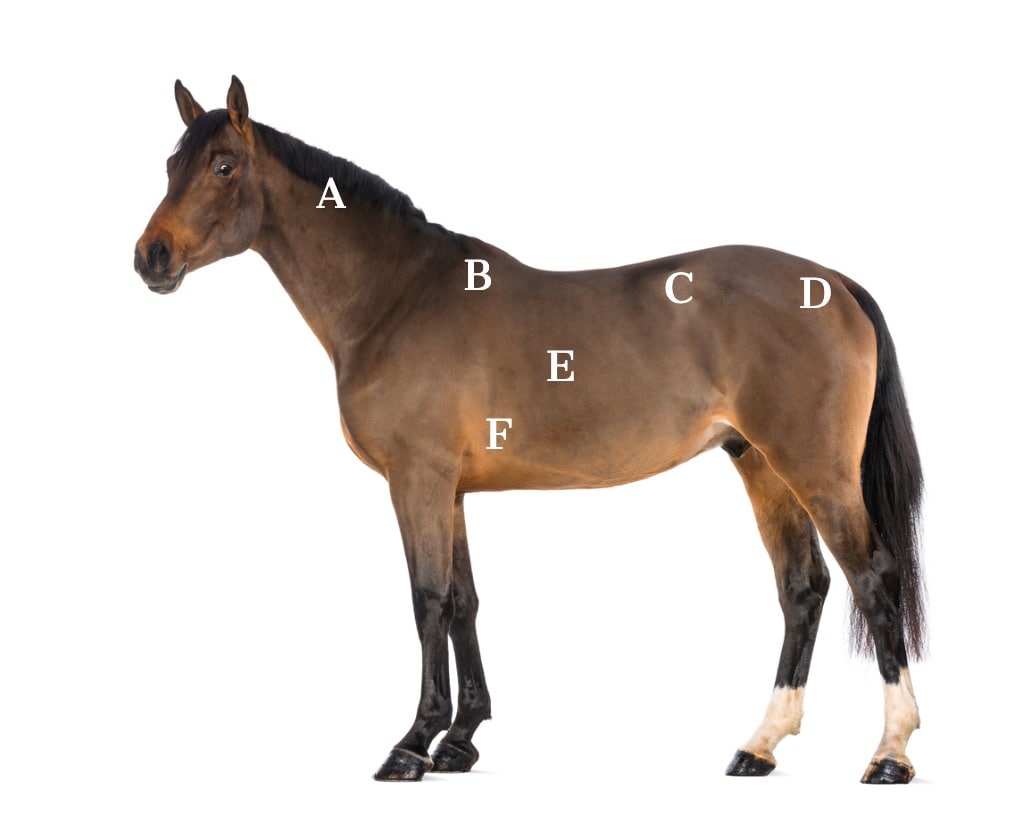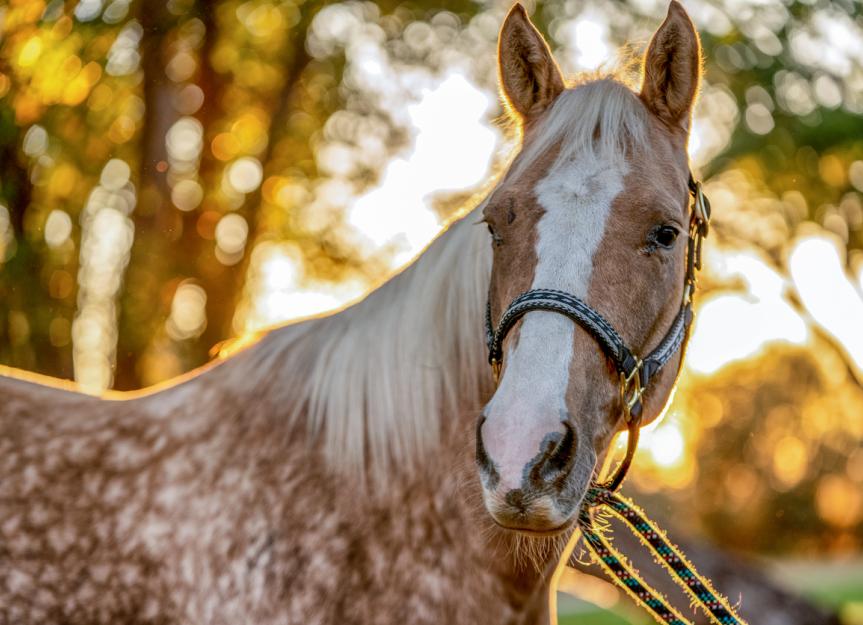Horse Body Condition Scoring
What Is a Horse Body Condition Score?
Obesity and emaciation have a large impact on a horse's overall health condition. Due to the importance of weight for their overall health, it is imperative that we maintain horses at their optimum body condition.
The standardized way to measure a horse's body condition score is called the Henneke System. The Henneke system measures a horse's body fat in six specific areas based on a numbering system of 1 (poor/emaciated) through 9 (extremely fat).
Some advantages of body condition scoring include:
Easy to perform
Incorporation of full body
Allows classification of weight condition (underweight, ideal weight, overweight)
Values can assess risk for disease
Disadvantages of body condition scoring include:
Only assesses subcutaneous fat
Variation between evaluator scoring can occur
Score does not distinguish between breed variation or body type
Score could be influenced by pregnancy, muscle, and coat length
How to Evaluate a Horse Body Condition Score (BCS)
The specific areas of the horse that are assessed for fat are:
Neck
In a thin a horse, the boney structures of the neck may be visible.
在5的BCS,脖子会顺利融入智慧h the body.
With a heavier horse (BCS of 8 or 9), the neck will become thickened, and a crest will be evident where the mane attaches along the top of the neck.
Withers
In a thin horse, no fat will be deposited making the withers stick up easily.
As the BCS increases, fat will be deposited and the withers will appear rounded with a BCS of 5.
As a horse becomes a BCS of 8-9, the withers will continue to deposit fat and may appear to be bulging.
Spine
At a BCS of 5, this area will appear relatively flat.
When a BCS drops below 5, the spine will begin to stick up.
As the BCS increases above 5, a crease may form down the back and buttocks of the horse.
Tailhead
In a very thin horse, this area is prominent and easily visible.
As the BCS increases, fat fills in around the tailhead and will become soft.
As the BCS increase to above 7, the tail head will begin to bulge.
Ribs
If ribs are easily seen, then the BCS score will be below a 5.
If you cannot see the ribs, then the BCS score is 5 or above.
During winter, the horse's winter coat may make it difficult to access the ribs, and you may need to palpate the rib area to assess.
As the BCS score increases, fat will begin to fill in around and on top of the ribs.
Once the BCS score is above 7, the ribs are much more difficult or even impossible to feel.
Behind shoulders
At a BCS of 5, the shoulders will blend smoothly with the horse's body.
As the BCS drops below 5, the shoulders will become more prominent and bonier.
As the BCS increases, fat is deposited behind the shoulders and will appear to bulge.

Horse Body Condition Scoring Chart
Score |
Condition |
1 |
Poor/Extremely emaciated
|
2 |
Very Thin/Emaciated
|
3 |
Thin
|
4 |
Moderately Thin
|
5 |
Moderate
|
6 |
Moderately Fleshy
|
7 |
Fleshy
|
8 |
Fat
|
9 |
Extremely Fat
|
Horse Body Condition Score Recommendations
Ideally, a horse should be maintained between a 4-6 BCS. Mares that are being used for breeding purposes should be maintained between 6-7 BCS. Stallions should be maintained between 5-6 BCS. Performance horses should be maintained between 4-5 BCS.
重量Tape for Horses
Generally, horse weight tapes use two different measurements to take an estimate of your horse's weight:
Girth width (around the withers and girth)
Horse body length (From point of shoulders to tail)
Using a weight tape is a great way to estimate your horse's weight and gauge if they are losing, gaining, or maintaining weight. It is important to use the same weight tape each time, read the directions for your specific weight tape, and be consistent each time you measure your horse. Weight tapes are not going to be perfectly accurate for every horse, but can be a great tool for determining trends of weight loss or gain.
References
1. The Body Condition Score. Equine Science.https://www.extension.iastate.edu/equine/body-condition-score
Featured Image: iStock.com/grandriver
Help us make PetMD better
Was this article helpful?
